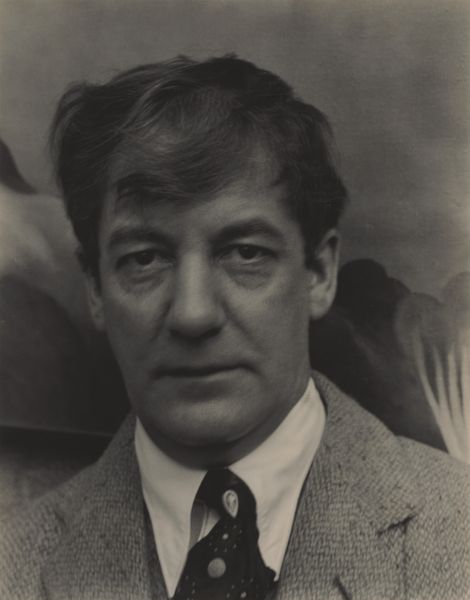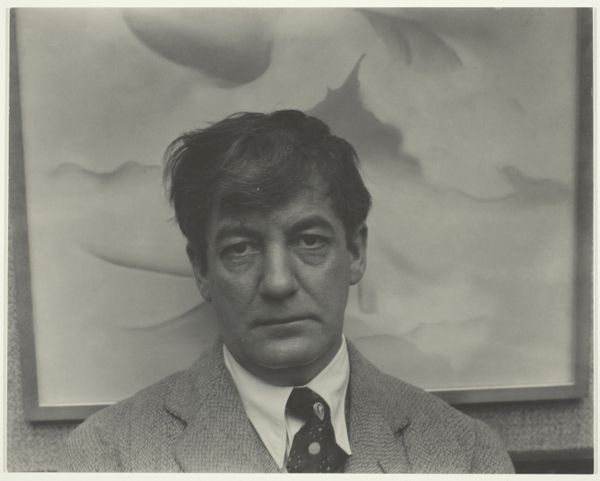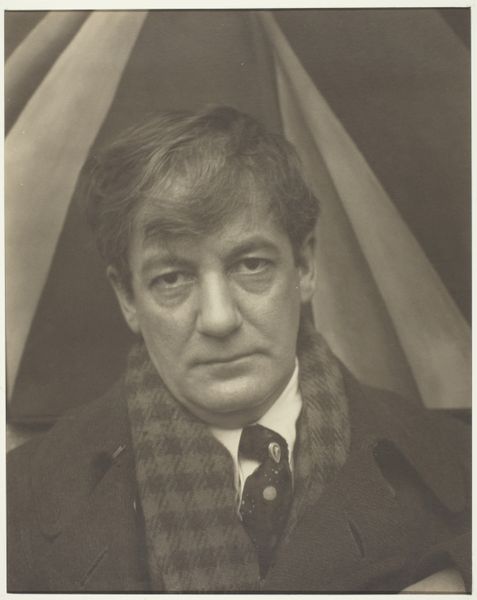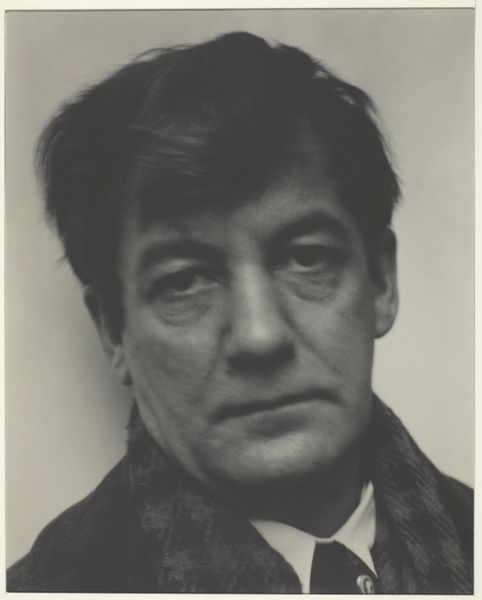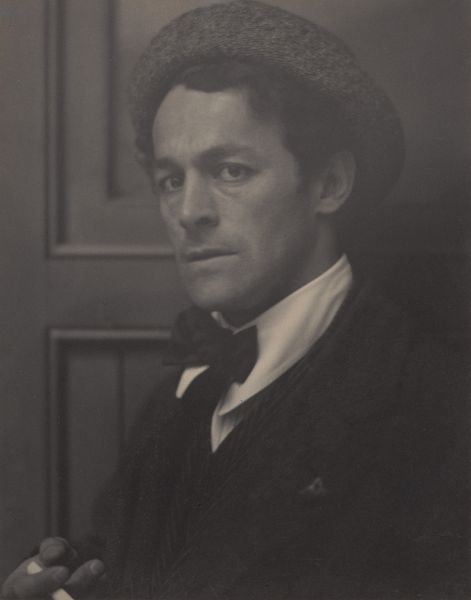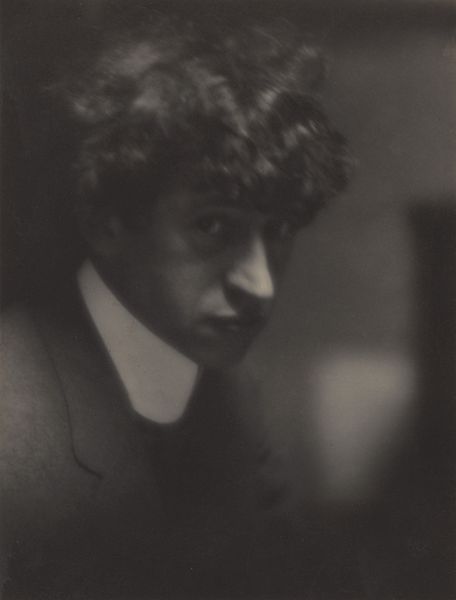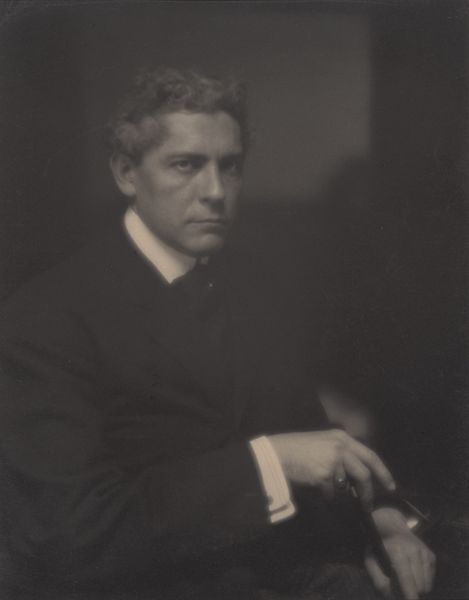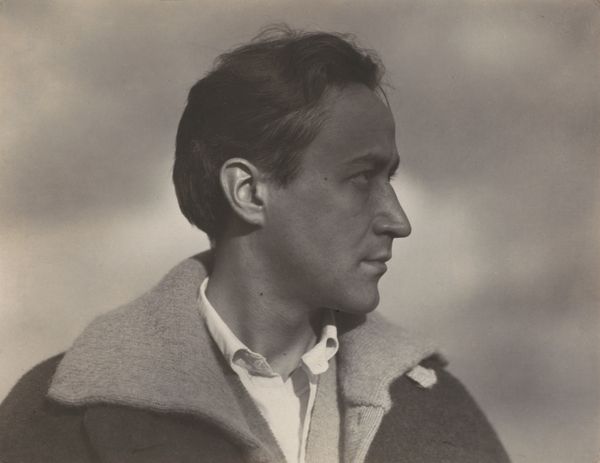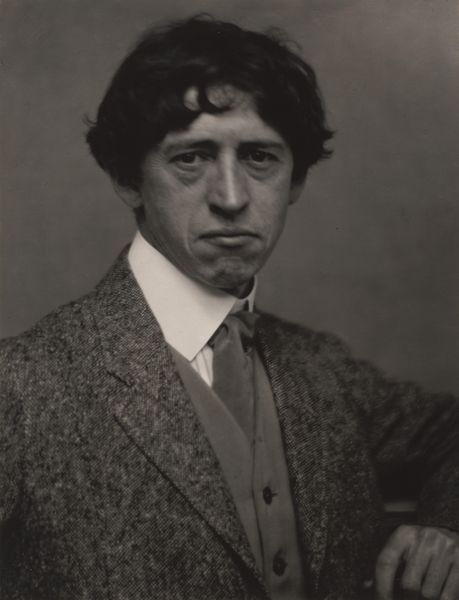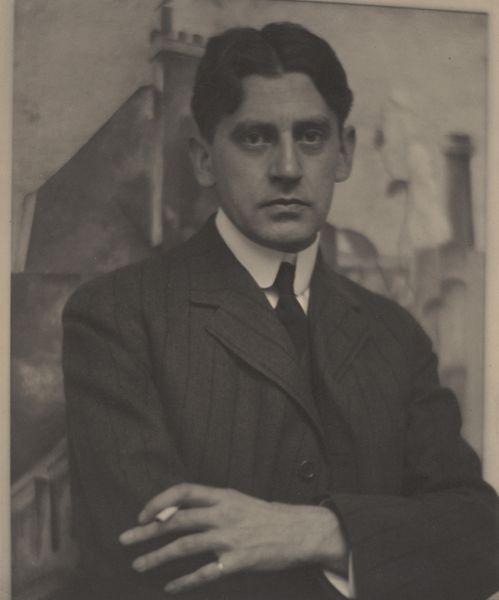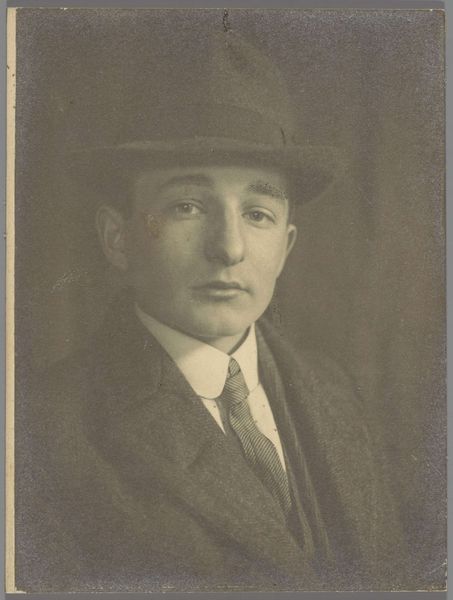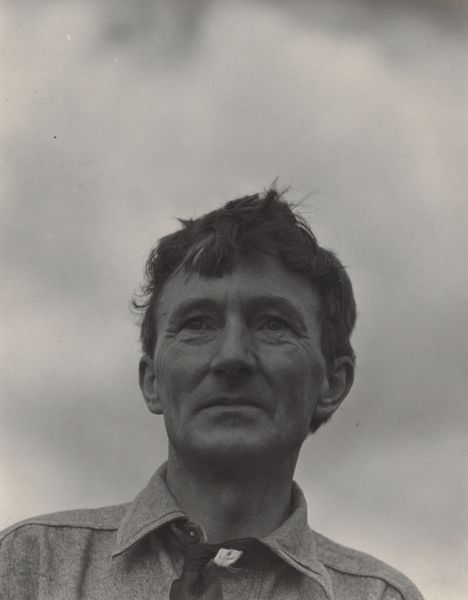
photography, gelatin-silver-print
#
portrait
#
pictorialism
#
portrait
#
photography
#
historical photography
#
gelatin-silver-print
#
modernism
#
realism
Dimensions: sheet (trimmed to image): 24.3 × 18.9 cm (9 9/16 × 7 7/16 in.) mount: 56.6 × 45.8 cm (22 5/16 × 18 1/16 in.)
Copyright: National Gallery of Art: CC0 1.0
Editor: So, this is Alfred Stieglitz’s "Sherwood Anderson," a gelatin-silver print from 1923. The photograph itself has such a tangible quality; the textures of the suit, the slightly out-of-focus painting in the background... it's almost sculptural. What jumps out to you when you look at it? Curator: For me, the interesting aspect lies in examining the materiality of this gelatin-silver print and its context. Photography in 1923 was undergoing a rapid transformation driven by industrial advancements. Stieglitz’s choice of this medium, the specific processes involved in creating the gelatin-silver print – the labor, the chemical reactions – were all part of defining photography as art, and not merely a means of reproduction. Editor: That's interesting! So, the value isn't just in the *subject* of the photograph but in the way Stieglitz is asserting photography’s place as a craft worthy of consideration? Curator: Precisely. The gelatin-silver process was becoming increasingly accessible thanks to industrial production, blurring lines between high art and craft. This democratization challenged established artistic hierarchies. Who was he portraying and what was he selling? What choices did he have during his process, which were industrial choices. What impact would that make on his work? Editor: I see! And thinking about the *production* of this image, rather than just the image itself, brings out those issues of accessibility and artistic intention. The interplay between industry and artistic expression adds another layer of meaning to the work. Curator: Exactly. And it helps us question: how did the ready availability of new materials and equipment shape artistic choices? Editor: It gives me so much to think about. It's not just a portrait; it’s about the changing landscape of art production! Curator: Indeed, analyzing the work from a materialist perspective helps unpack hidden socio-economic forces in the art.
Comments
No comments
Be the first to comment and join the conversation on the ultimate creative platform.
